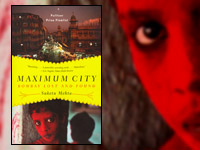Maximum City: Bombay Lost and Found (Suketu Mehta, 2004)

Bombay population
Greater Bombay’s population, currently 19 million, is bigger than that of 173 countries in the world. If it were a country by itself in 2004, it would rank at number 54. Cities should be examined like countries. Each has a city culture, as countries possess a national culture. There is something peculiarly Bombayite about Bombayites and likewise about Delhiites or New Yorkers or Parisians—the way the women walk, what their young people like to do in the evenings, what their definitions of fun and horror are. The growth of the megacity is an Asian phenomenon: Asia has eleven of the world’s fifteen biggest. Why do Asians like to live in cities? Maybe we like people more.
India is not an overpopulated country. Its population density is lower than that of many other countries not thought of as overpopulated. In 1999, Belgium had a population density of 130 people per square mile; the Netherlands, 150; India, under 120. It is the cities of India that are overpopulated. Singapore has a density of 2,535 people per square mile. Berlin, the most crowded European city, has 1,130 people per square mile. The island city of Bombay in 1990 had a density of 17,550 people per square mile. Some parts of central Bombay have a population density of 1 million people per square mile. This is the highest number of individuals massed together at any spot in the world. They are not equally dispersed across the island. Two-thirds of the city’s residents are crowded into just 5 percent of the total area, while the richer or more rent-protected one-third monopolize the remaining 95 percent. [p. 16]
Bombay trains
The western branch of the train terminates in beauty, the eastern branch in horror. On the Churchgate train, past Charni Road station as it sees the sea, past the gymkhanas—Islam, Catholic, Hindu, Parsi—as the shacks fade away, Bombay becomes a different city, an earlier city, a beautiful city. All of a sudden there is the blue sky and the clear water of Marine Drive, and everybody looks toward the bay and starts breathing.
The eastern branch, the Harbour Line, toward its end passes slowly through people’s bedrooms: in stretches the shacks of the poor are less than a yard away from the tracks. They can roll out of bed and into the path of the train. Their little children come out and go wandering over the tracks. Trains kill more than a thousand slum dwellers a year. Others, who are on the train, are killed by electricity poles placed too close to the tracks, as they hang on to the train from the outside by the windows. One such pole kills about ten commuters a month as the train comes rushing around a curve. One of Girish’s friends on the 9:05 from Jogeshwari was killed when he was hanging from the window and a pole loomed up, too close, too fast. Just the previous year another of that group, playing the daredevil by riding on top of the moving train, was hit by an arch and survived. Girish muses on the injustice of the two accidents. The showoff survived and the shy window hanger, to whom Girish had only minutes before offered a place inside the train, died.
Paresh Nathvani, a kite dealer from Kandivili, performs a singular social service: He provides free shrouds for those killed by train accidents. About a decade ago, the kite merchant saw a man run over by a train at Grant Road. The railway workers tore down an advertising banner to cover the body. “Every religion dictates that the dead be covered with a piece of fresh white cloth,” he realized. So every Thursday, Nathvani visits four railway stations and supplies them with fresh shrouds, two yards each. The biggest station, Andheri, gets ten shrouds a week. The stationmaster initials a ledger that Nathvani maintains and stamps it with his seal. He runs through 650 yards of cloth a year. But it’s not enough; it’s a long way from enough. The trains of Bombay kill four thousand people yearly. [p. 494-495]

